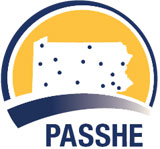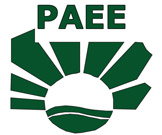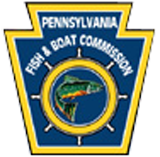Sunship Earth
 It’s hard to imagine, but at this very moment we are traveling at an incredible speed. This ship, which we call Earth, is rotating at a speed of over 1000 miles per hour. At the same time, it is orbiting a medium size star, the sun, at over sixty-five thousand miles an hour. Meanwhile, this solar system is whirling through the Milky Way galaxy and the galaxy is zipping through space, all at astounding speeds. We call the earth a Sunship because the sun is the life-giving energy source of our planet
It’s hard to imagine, but at this very moment we are traveling at an incredible speed. This ship, which we call Earth, is rotating at a speed of over 1000 miles per hour. At the same time, it is orbiting a medium size star, the sun, at over sixty-five thousand miles an hour. Meanwhile, this solar system is whirling through the Milky Way galaxy and the galaxy is zipping through space, all at astounding speeds. We call the earth a Sunship because the sun is the life-giving energy source of our planet
The Sunship has been traveling on its journey for billions of years, even before there were any passengers to speak of. In a way, it has been on “automatic pilot” all this time and all the Sunship’s mechanisms have maintained themselves. More recently, however, human passengers have been tampering with these mechanisms and the future of our Sunship is uncertain.
We think of the Sunship Earth program as a “retraining” process for young human passengers – an orientation to the nature and importance of their journey. We want to acquaint young people with the earth as their place in space, help them get to know it better through firsthand contact, and then convey some basic understandings of how its life systems function. In addition, we want to help them see that they have a dual role as a passenger and crew member, and finally, give each one of them a chance to explore the personal significance behind this new awareness.
Request more information, and schedule for Sunship Earth.
Goals
The goals of the program can be summed up as follows:
- Planetary Awareness – our place in space
- Sensory Awareness – the richness and beauty of our planet
- Ecological Understanding – the Sunship’s systems of life
- Environmental Consciousness – our responsibilities as passengers and crew
Sunship Earth is a carefully thought out, intensive set of experiences aimed at accomplishing these goals. The Sunship Study Station staff, the crew counselors, and the classroom teachers will combine efforts to provide a dynamic, effective learning experience for the kids.
Sunship Earth is based on Acclimatization – a program which seeks to help people build a sense of relationship – in both feelings and understandings – with the natural world. Sunship Earth, as all Acclimatization programs, sets out to promote a way of viewing the natural world that will encourage a loving, caring interest in it. It is based on the belief that a fuller understanding and appreciation of our relationship with the earth will lead people to take positive environmental actions, building lifestyles that fit more harmoniously with systems which support all life on this planet.
Leadership
McKeever Environmental Center has specially trained “Crew Counselors” who will work with the students for most of the Sunship Earth experience. Teachers and parent leaders must be on-site to chaperon the dorms and conduct activities during Quiet Time, Time Out, and Workshops.
Week at a Glance
The week at the Sunship Study Station is an extremely busy one. Each day is filled with a complete schedule of learning experiences. Listed here are some of the highlights of the week – the major program elements. Since specific scheduling may vary somewhat, this briefing sheet is designed just to give you a general idea of what your week will be like.
Monday Afternoon
WELCOME ABOARD
An introductory multimedia presentation provides an exciting kickoff to the week and acquaints the students with the Sunship theme. As passengers on this planet, the students are given an important task for the week. Their mission is to find out how Sunship Earth operated and how its human passengers can live in harmony with its “automatic pilot systems.”
TOUCH THE EARTH
A special Acclimatization Walk immediately follows the Welcome Aboard presentation. Small groups led by crew counselors depart from a centrally located “hub” where they might become “bloodhounds” to sniff out natural scents, or use “magic paint” to discover the color and beauty in small things. The atmosphere is fun and the activities emphasize looking at the natural world in new ways, building awareness through all five senses, and awakening a “sense of wonder.
“MAGIC SPOTS”
Each day, there is time set aside for solitude. On Monday afternoon following the Touch the Earth session, students locate their own magic spot which they’ll return to throughout the week. Magic spot time provides the opportunity for each child to develop an easy, quiet relationship with one particular natural space. At these times, they will use their Log Books which contain specially designed Magic Spot activities.
TIME OUT
At the end of each afternoon, everyone gets a chance to get away from thinking and learning and just have some fun. Time Out activities might include non-competitive games, expeditions, or quiet projects.
Evenings
MEALS
At the Sunship Study Station, we attempt to make every part of the day a learning experience. The menu removes the “disguises” from foods, the students will learn how to cut back on energy waste at meal times, everyone will learn the identities of the “Mystery Passengers”, and there will be “Discovery Announcements” about the day’s events.
WORKSHOPS
Schools are welcome to schedule crafts or other activities which are compatible with the Sunship Earth theme during the workshop times.
CAMPFIRES
The warmth and community spirit of a campfire is a good time to follow up on the concepts learned that day. The crew counselors will lead the students in songs, stories, and skits to illustrate what was learned that day.
Tuesday, Wednesday, and Thursday Mornings
CONCEPT PATHS
Three full mornings at the Sunship Study Station are devoted to a series of exciting learning experiences – the Concept Paths. In small groups led by trained crew counselors, the students will learn seven key ecological concepts: Energy Flow, Cycles, Diversity, Community, Interrelationships, Change, and Adaptations, which they remember by the formula EC-DC-IC-A. This formula, along with an official Passport (a booklet type of learning tool) provides continuity throughout the week’s adventures. During the course of the week, the kids will experience fifteen different Concept Path activities. They will crawl inside a giant leaf to learn how green plants capture the sun’s energy. They will become birds to discover how the hummingbird is perfectly adapted to get nectar from flowers. And by Thursday, when they complete their Passports, they will have a good understanding of how the Sunship’s ecological systems work.
Tuesday, Wednesday, and Thursday Afternoons
DISCOVERY PARTIES
These activities are designed to encourage the students to discover for themselves the fascinating things that live on our Sunship. In “Lost Letters”, for example, small groups led by crew counselors head out in search of the meaning of a long-lost word. With the help of a set of clues, they make lots of exciting finds and eventually figure out the word for themselves.
IMMERSING ACTIVITIES
These activities are aimed at total sensory involvement with the natural world. In “Micro Parks”, each student becomes a “Park Ranger” who is in charge of setting up a miniature national park in a small area on the ground Once the parks’ special attractions (moss, rocks, tiny plants, small critters, etc.) are marked with flags, tours are held so that everyone can share their parks. (A special Immersing Experience, “Nightwatchers”, takes place on Tuesday evening.)
Thursday Night
THE JOURNEY HOME
After the regular campfire, a special campfire is held and an “ancient legend” is told concerning a group of people whose young ones embark on a journey down a river to discover the seven secrets of life (which correspond to the seven ecological concepts learned during the week) in order to help their people better understand the earth. The message is that the students, like the young ones in the story, must return to their people and share with them their newly-gained understanding of, and feeling for, the earth.
Friday Morning
MODEL PLANETS
The students, in small groups, construct a “Miniature Sunship” on a small area on the ground. Using leaves, sticks, rocks, etc., they fill their model planet with “living things” and include all the necessary ecological life support systems (examples of the seven concepts). Ambassadors travel around the “solar system” and share ideas. When the planets are completed, each group is informed that their planet doesn’t have the right conditions for life (too hot, too cold, chlorine in the atmosphere, etc.) and they must migrate to the third planet, which is the only one with the right conditions for life. “Sunship Earth” quickly becomes overcrowded and damaged, illustrating in an exaggerated way similar happenings on the real planet.
SUNSHIP CONVENTION
To finish the week, the students are asked to examine their daily lives to think of something they can do to help keep the sunship in good working order. Their commitments to be better sunship passengers are recorded in their passports and are shared at the Sunship Convention, attended by all crews. They depart for home an a note of personal responsibility for helping others understand what they have learned during the week.
Subscribe to the McKeever Newsletter
Links
 Slippery Rock University
Slippery Rock University of Pennsylvania – A Rock Solid Education
Slippery Rock University
Slippery Rock University of Pennsylvania – A Rock Solid Education PA State System of Higher Education
Let a state system university be your answer.
PA State System of Higher Education
Let a state system university be your answer. Pennsylvania Association of Environmental Educators
PAEE unites, supports, and empowers a community of Environmental Educators throughout Pennsylvania.
Pennsylvania Association of Environmental Educators
PAEE unites, supports, and empowers a community of Environmental Educators throughout Pennsylvania. EnviroLink Network
Non-profit organization providing access to thousands of online environmental resources.
EnviroLink Network
Non-profit organization providing access to thousands of online environmental resources. GreenTreks Network, Inc.
Telling Stories that Change the World
GreenTreks Network, Inc.
Telling Stories that Change the World PA Fish and Boat Commission
Protect, conserve, and enhance the Commonwealth’s aquatic resources and provide fishing and boating opportunities
PA Fish and Boat Commission
Protect, conserve, and enhance the Commonwealth’s aquatic resources and provide fishing and boating opportunities Mercer County, PA
Everyone needs an escape plan.
Mercer County, PA
Everyone needs an escape plan.
